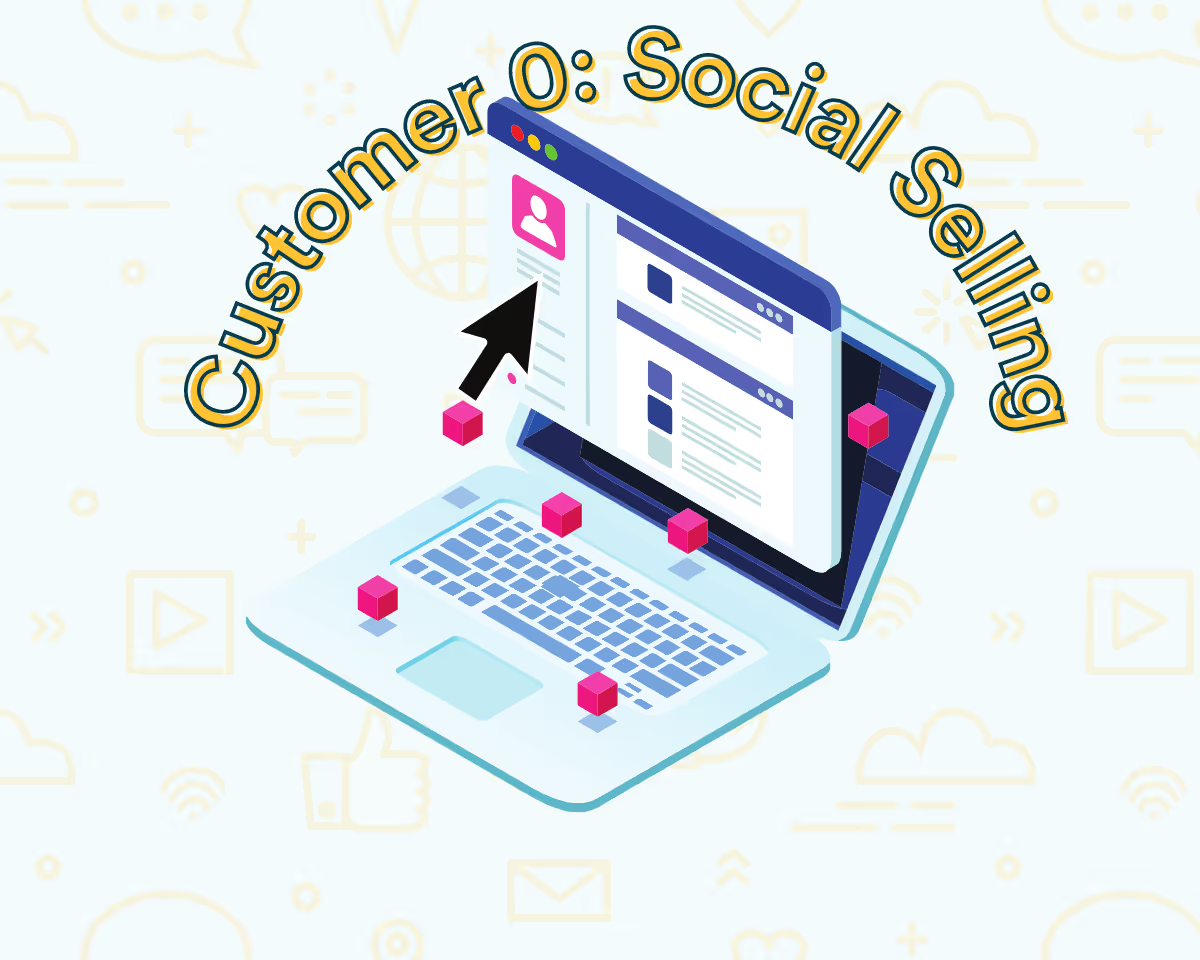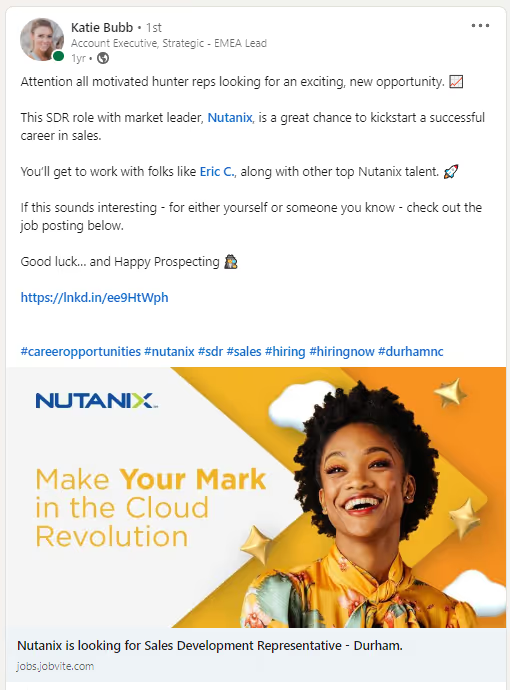Ready to create more pipeline?
Get a demo and discover why thousands of SDR and Sales teams trust LeadIQ to help them build pipeline confidently.



Social selling leverages social media platforms to build relationships, nurture prospects, and close deals. By engaging authentically on platforms like LinkedIn, sellers can enhance their credibility and increase the likelihood of closing deals.

Content shared by employees often sees higher engagement than corporate posts. Encouraging the entire team to participate in social selling can extend reach, boost brand awareness, and attract potential talent.

Actively engaging with prospects on social media, such as by following them or resharing their posts, helps establish connections and can lead to more effective sales outcomes.
Get a demo and discover why thousands of SDR and Sales teams trust LeadIQ to help them build pipeline confidently.
In this post, we’ll examine what social selling is, why it’s important, and how it helps brands and sellers get to the next level.
Social selling is a sales strategy that involves using social media platforms and online networking to identify, connect with, and engage potential customers. Instead of relying exclusively on classic sales techniques like cold calling and outbound email sequences, social selling leverages social channels to build relationships, nurture prospects, and ultimately close deals.
Social selling is particularly effective in the B2B SaaS industry, where building relationships and trust are crucial in long sales cycles and complex buying decisions. When done correctly, social selling can help organizations expand their network, stay top of mind with prospects, and accelerate revenue growth.
When our entire team uses LeadIQ for social selling, they learn more about how our products work and what matters most to our customers. At the same time, their efforts also help us close more deals.
According to LinkedIn data, the average employee has a network that is 10x larger than their company’s. Since outbound sales success is a numbers game, the more folks our team reaches out to, the easier it is to win business.
At the same time, social selling is an easy way to increase team engagement and get more folks involved. Since 90% of business leaders agree there’s a direct connection between engagement and business success, our social selling initiative is more or less a no-brainer.
Additionally, that same LinkedIn report found that content that is shared by employees has a 2x higher engagement rate than content shared from company accounts. Who knew? It turns out that real-life human beings are more approachable than faceless corporate brands after all.
Social selling helps LeadIQ grow in myriad ways. For starters, by leveraging our employees’ networks, we’re able to extend our reach tenfold. Plus, employee shares are seen as more authentic than content coming from corporate accounts; the LinkedIn report also found that folks who are connected to your employees on LinkedIn are 27% more likely to respond to an InMail from one of your sales reps for this same reason.
Add it all up, and social selling is an easy way for us to bolster our prospecting efforts, boost brand awareness, increase followers on our company page, and generate leads — all without breaking the bank.
Additionally, companies that have a lot of employees sharing quality content on LinkedIn are 58% more likely to attract talent, LinkedIn’s report found. With 84.3% of small business employers struggling to hire qualified workers, anything an organization can do to win the war for talent should be prioritized. By making social selling a core part of our operations, we increase the chances that future team members stumble across our content and consider working for us.
Believe it or not, salespeople are 51% more likely to hit their quota when they use social selling tactics. Since buyers are making complex, important decisions, they conduct research on social media to guide purchase decisions. Ultimately, all decision-makers are looking for trusted advisors to solve their problems, and this is where social selling can be a game-changer.
By embracing social selling and being active on social media, it’s easier for potential buyers to discover and engage with content, positioning your team as trusted advisors while keeping your brand top of mind. This, in turn, makes it easier to attract sales-qualified leads (SQLs) and attract new business — all while shortening sales cycles.
At LeadIQ, our own data supports this. Over the last six months, all of our top-10 performing posts feature our own employees; again, people like to see other people on social media.
Recently, LeadIQ hosted a Customer Zero session on social selling. LeadIQ COO Ben Kwon was particularly impressed by the fact that content has twice as much engagement when shared by employees than when it comes from corporate accounts.
“I didn’t know this, but it really resonated with me,” he said. “If content has twice more visibility when shared by us, this isn’t exclusive to sales. Everyone here can give LeadIQ a lot of exposure.”
According to Ben, making the most out of social selling opportunities is a two-way street.
“Before I reach out to a prospect, I always look them up on LinkedIn to get a sense of what they’re posting,” he said. “This works both ways. Prospects are looking us up to see if we have credibility when we reach out to them.”
During the session, Katie Bubb, an account executive at LeadIQ, shared some social selling tips for success, encouraging the team to use LinkedIn as an extra avenue on top of cold calls and emails. Out of the gate, Katie encouraged everyone to start following their prospects.
“When you connect, use the format of texting,” she said. “Keep it short and sweet. This is not the place to give a hard pitch, but it is a good place to reference an email or voicemail you left.”
In her experience, Katie has had a lot of success resharing her prospects’ job posts to help them find new candidates. Additionally, she encourages folks to look at what prospects are posting and commenting on and use that content to come up with an inside joke that gets you noticed.

Patrick Donnelly, an account executive who worked at LeadIQ for more than four years, believes that outbound activity can inspire inbound, and vice versa. He also shared a template he relied on extensively — to the tune of a 100% conversation rate.

While you’re increasing your social selling activities, Patrick also recommends clicking the bell on your prospect’s pages to get automatic notifications about their posts and make sure nothing slips through the cracks.
After we talked about the importance of amplifying our brand on LinkedIn, I felt compelled to do my part to get in on the conversation. So, I drafted a quick post on cold email subject lines that always get sent to my trash folder and examples of personalization that actually get me to read emails.
Within a couple of minutes of posting this, I got a direct message from Chis Nethercote, an account executive from metadata.io who I had been leaving unread for a few months (sorry Chris!).

This well-timed follow-up to my post while I was still active on LinkedIn got me to go check out his cold email. Out of respect for Chris’ hustle, I’m not going to share his whole playbook here. But I will tell you the things I liked about the email that got me to respond and start a discussion:
Later on that day, I received a perfect example of “anti-social selling.” Right after I posted about how I delete emails with variations of “quick question,” this landed in my inbox:

This isn’t even a bad email. But the timing makes me feel like this was part of a mass-produced sequence where the sender didn’t research me or my company prior to blasting out. Had the sender taken a couple of minutes to browse my LinkedIn page and learn the context, I’m guessing they would have sent the note with a different subject line.
Stay tuned: In the next installment of this series, we’ll examine the cold calling outreach we do as part of our Customer Zero initiative.